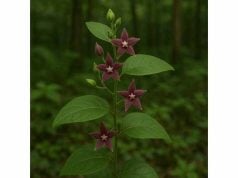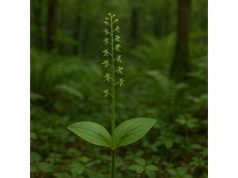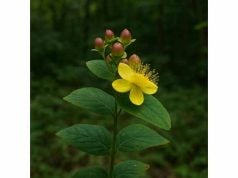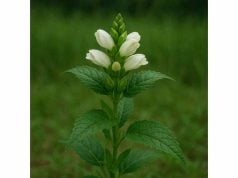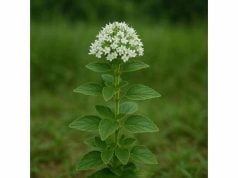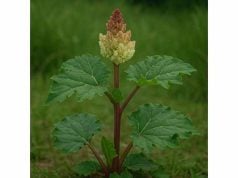
Teasel, a traditional herb known by its botanical name Dipsacus fullonum, is celebrated not only for its striking spiny flower heads and unique appearance but also for its diverse therapeutic applications. Valued in folk medicine for centuries, teasel is renowned for its anti-inflammatory, analgesic, and antioxidant properties. Rich in bioactive compounds such as saponins, iridoid glycosides, and various flavonoids, it has been traditionally used to relieve joint pain, aid in tissue repair, and support circulatory health. Today, teasel continues to be explored for its medicinal value while also finding modern applications in natural health supplements and cosmetic formulations.
Table of Contents
- Botanical Overview and Identification
- Phytochemical Profile and Active Compounds
- Health Benefits and Medicinal Qualities
- Practical Applications and Safety Considerations
- Research Insights and Key Study Findings
- Frequently Asked Questions
Botanical Overview and Identification
Teasel (Dipsacus fullonum) is a biennial herb belonging to the Caprifoliaceae (formerly Dipsacaceae) family. Native to Europe and parts of Asia, it has been introduced into North America and other regions worldwide. Teasel typically forms a rosette of basal leaves in its first year, producing a tall, spiny flowering stem in the second. The plant can reach heights of up to 1.5–2 meters, with glossy, lanceolate leaves that exhibit a blue-green hue. Its crown of prickly, conical flower heads is not only visually arresting but also plays a significant role in its historical uses.
In the wild, teasel thrives in disturbed soils such as abandoned fields, roadsides, and open woodlands. The plant favors sunny locations with well-drained, nutrient-rich soils but can also tolerate less-than-ideal growing conditions. The distinctive, spiny flower heads serve to protect the plant’s reproductive parts and deter herbivores. Additionally, teasel has a notable role in the textile industry; historically, its spines were used to raise the nap on woolen cloth in the fulling process, earning it the nickname “fuller’s teasel.”
Taxonomically, the genus Dipsacus comprises several species, but Dipsacus fullonum is the most widely known and used in traditional remedies. Morphologically, the basal rosette of leaves is the plant’s foundation during its first year, while the second-year flowering spike displays a succession of ringed whorls of spiny bracts surrounding clusters of small, inconspicuous white or pale pink flowers. These flowers eventually give way to seed heads that remain on the plant through the winter, ensuring propagation in the following season.
The historical and cultural significance of teasel spans many centuries. In ancient times, teasel was revered not only for its practical applications in fulling but also for its medicinal properties. Folk healers used teasel preparations to treat rheumatism, joint pain, and skin disorders, believing that the plant’s natural compounds could alleviate inflammatory conditions and aid in tissue repair. Today, teasel continues to be appreciated both for its ornamental value in natural gardens and for its emerging role as a natural remedy in herbal medicine.
Modern botanical studies have focused on understanding the ecology and distribution of teasel, as well as its adaptive mechanisms that allow it to thrive in diverse environments. Researchers continue to explore the genetic variability among different populations of Dipsacus fullonum, shedding light on its adaptability and resilience. This has important implications for conservation and sustainable cultivation practices, ensuring that this valuable plant remains available for both ecological and medicinal purposes.
In summary, the botanical profile of teasel is defined by its biennial life cycle, unique spiny inflorescence, and adaptability to disturbed habitats. Its historical significance in both textile processing and traditional medicine underscores the plant’s versatility and enduring appeal. As modern science continues to explore its genetic diversity and ecological resilience, teasel stands as a fascinating example of how traditional plants can adapt to contemporary uses and modern cultivation challenges.
Furthermore, the ongoing integration of teasel into natural landscaping and herbal medicine is a testament to its robust nature and multifaceted uses. Its striking appearance, combined with its therapeutic potential, makes it a plant of interest for gardeners, herbalists, and researchers alike. Teasel remains a subject of extensive study for its ecological behavior and its potential applications in modern natural health formulations, bridging the gap between ancient remedies and contemporary scientific inquiry.
Phytochemical Profile and Active Compounds
Teasel is rich in a diverse array of bioactive compounds that are largely responsible for its therapeutic properties. Over the years, phytochemical research has identified several key substances in teasel extracts, including saponins, iridoid glycosides, flavonoids, and phenolic compounds. These constituents work synergistically to impart anti-inflammatory, analgesic, and antioxidant effects, making teasel a promising candidate for natural remedy applications.
A closer look at the key active compounds in teasel reveals the following important constituents:
- Saponins: Saponins are a group of naturally occurring glycosides that have notable anti-inflammatory and immune-modulating properties. In teasel, these compounds help reduce inflammation and promote tissue repair by modulating cellular responses. They also possess mild antimicrobial properties which contribute to the plant’s overall therapeutic efficacy.
- Iridoid Glycosides: Iridoid glycosides are responsible for many of the plant’s medicinal properties, particularly its ability to alleviate pain and reduce inflammation. These compounds have been studied for their potential to protect cells from oxidative damage and support the healing process in musculoskeletal conditions.
- Flavonoids: As powerful antioxidants, flavonoids in teasel help neutralize free radicals, protecting cells from oxidative stress. Their anti-inflammatory actions complement the other bioactive compounds, further enhancing the plant’s ability to reduce pain and support overall cellular health.
- Phenolic Compounds: These compounds contribute to the antioxidant capacity of teasel. By scavenging free radicals, phenolic compounds help safeguard against chronic diseases linked to oxidative damage, such as cardiovascular conditions and certain cancers.
- Additional Minor Constituents: Teasel also contains trace amounts of essential oils and other secondary metabolites that contribute to its distinctive aroma and therapeutic profile. Although present in smaller concentrations, these compounds play a role in the overall synergistic effects observed in teasel preparations.
The interplay among these compounds is vital in understanding teasel’s effectiveness as a natural remedy. Research indicates that the holistic impact of teasel is not the result of a single active ingredient but rather the combined action of its complex phytochemical spectrum. This synergistic relationship enhances the plant’s anti-inflammatory, analgesic, and antioxidant properties, making it valuable in the treatment of conditions such as arthritis, tendinitis, and other inflammatory disorders.
Extraction methods such as solvent extraction and steam distillation have been utilized to isolate and study these bioactive compounds in teasel. Researchers continue to refine these techniques to maximize yield and preserve the integrity of the active ingredients, ensuring that the medicinal qualities of teasel are maintained in various preparations.
Moreover, advanced analytical techniques like high-performance liquid chromatography (HPLC) and mass spectrometry (MS) have allowed scientists to map the detailed phytochemical profile of teasel, providing insights into the specific roles of individual compounds. These studies not only support the traditional uses of teasel but also open up new avenues for its incorporation into modern health supplements and topical formulations.
The extensive phytochemical research on teasel highlights its potential as a natural source of compounds capable of modulating inflammatory pathways and protecting against oxidative stress. This multifaceted chemical profile makes teasel a compelling subject for further study, with promising implications for its use in modern herbal medicine and integrative healthcare practices.
In summary, the phytochemical profile of teasel is characterized by a rich blend of saponins, iridoid glycosides, flavonoids, and phenolic compounds. These constituents act in concert to deliver potent anti-inflammatory, analgesic, and antioxidant effects, validating teasel’s traditional role in treating pain and inflammation. The ongoing refinement of extraction and analytical methods promises to further enhance our understanding of teasel’s chemical complexity and its potential applications in natural therapeutics.
As emerging research continues to elucidate the intricate relationships between these bioactive compounds, teasel’s therapeutic potential is expected to grow, paving the way for its broader acceptance and utilization in contemporary medicine. This comprehensive understanding underscores the enduring significance of teasel as a natural remedy with a powerful, multifaceted phytochemical foundation.
Health Benefits and Medicinal Qualities
Teasel has long been reputed in traditional medicine for its health-enhancing and healing properties. Its notable anti-inflammatory and analgesic effects have made it a trusted remedy for alleviating joint pain, muscle soreness, and other inflammatory conditions. Additionally, teasel possesses antioxidant properties that protect cells from free radical damage, thereby contributing to overall cellular health and longevity.
One of the most significant health benefits of teasel is its ability to reduce inflammation. The bioactive compounds—particularly iridoid glycosides and saponins—work to modulate the body’s inflammatory response, making teasel a popular choice for managing rheumatic conditions, tendinitis, and other musculoskeletal disorders. By reducing pro-inflammatory mediators, teasel can help alleviate pain and improve mobility, offering relief to those suffering from chronic inflammatory ailments.
The analgesic properties of teasel further enhance its therapeutic value. Traditionally used to ease pain associated with injuries and chronic conditions, teasel offers a natural alternative to synthetic analgesics. Its mild anesthetic effect can soothe localized pain, allowing the body to heal more efficiently while reducing the need for stronger, potentially habit-forming painkillers.
Antioxidant protection is another cornerstone of teasel’s medicinal qualities. The flavonoids and phenolic compounds present in the plant act as free radical scavengers, reducing oxidative stress—a key factor in the development of chronic diseases such as heart disease and certain cancers. By curbing oxidative damage, teasel helps preserve the integrity of cells and tissues, thereby promoting overall health and longevity.
In traditional herbal medicine, teasel has also been utilized to support tissue repair and wound healing. Its astringent properties, derived from tannins and other phenolic compounds, not only help tighten and tone the skin but also accelerate the repair of minor cuts and abrasions. These wound-healing properties have made teasel a component in many natural skincare and first-aid remedies.
Furthermore, teasel’s potential benefits extend to supporting digestive health. Some traditional practices advocate the use of teasel preparations to stimulate appetite and improve gastrointestinal function. While more research is needed in this area, preliminary evidence suggests that the herb’s bioactive compounds may positively influence digestive enzymes and promote efficient nutrient absorption.
Additional health benefits of teasel include its role in reducing oxidative stress, which can support the immune system and help prevent age-related declines in bodily functions. Its multifaceted therapeutic profile makes teasel a valuable addition to integrative health practices, where natural remedies are used to support overall well-being in conjunction with conventional treatments.
In summary, the medicinal qualities of teasel are extensive. Its anti-inflammatory, analgesic, antioxidant, and wound-healing properties provide a natural, holistic approach to managing pain, supporting tissue repair, and protecting against chronic diseases. These attributes validate its longstanding use in traditional medicine and underscore its potential role in modern therapeutic applications.
As the demand for natural and effective remedies continues to grow, teasel is increasingly recognized as a potent herbal resource. Its ability to address a wide range of health issues—from joint and muscle pain to skin disorders and oxidative stress—demonstrates its versatility and enduring relevance. Continued research into its mechanisms of action and clinical applications promises to further expand the therapeutic horizons for teasel.
Moreover, teasel’s natural properties make it an ideal ingredient for both oral and topical formulations. Whether incorporated into capsules, tinctures, or skincare products, its integrative benefits offer a compelling alternative to synthetic drugs. This balanced approach not only emphasizes holistic health but also helps foster a deeper connection between traditional herbal wisdom and modern medical science.
Practical Applications and Safety Considerations
Teasel finds its utility in an array of practical applications spanning the realms of herbal medicine, cosmetic formulations, and even culinary innovation. In traditional herbal medicine, teasel is primarily used in the form of tinctures, decoctions, or powdered extracts to harness its anti-inflammatory and analgesic properties. Its extracts are often applied topically to alleviate pain and inflammation in conditions such as arthritis, muscle sprains, and skin irritations.
For topical applications, teasel extract is commonly incorporated into creams, ointments, and gels. Due to its potency, it is typically diluted with a carrier medium to ensure safe use and to minimize the risk of skin irritation. Dermatologists and herbal practitioners recommend performing a patch test before extensive application, particularly for individuals with sensitive skin or allergies.
In the realm of cosmetics, teasel’s astringent qualities and antioxidant content have spurred its inclusion in formulations aimed at promoting skin firmness, reducing the appearance of wrinkles, and managing acne. Natural skincare products that feature teasel extract benefit from its ability to soothe irritated skin, reduce inflammation, and support the natural healing process.
Culinary uses of teasel are less common but still noteworthy. In some traditional cultures, teasel parts have been used to flavor certain beverages or as a spice in regional recipes. However, owing to its potent bioactive profile, culinary applications require careful dosage to avoid overpowering flavors. When used in food preparations, teasel is typically added in very small quantities, ensuring that it complements rather than dominates the overall taste.
Safety is paramount when using teasel, especially in concentrated forms such as extracts or tinctures. While teasel has a long history of safe use in traditional medicine, modern guidelines advise caution. Excessive use or ingestion of undiluted teasel extracts may lead to adverse effects such as gastrointestinal discomfort or allergic reactions. Consequently, it is recommended that teasel-based products follow established dosage guidelines, and that individuals consult with a healthcare professional before initiating any new herbal regimen.
Particular attention should be given to storage and handling practices. Herbal extracts should be stored in airtight, dark glass containers away from direct sunlight and heat. Proper storage conditions help preserve the active compounds and extend the shelf-life of teasel products. Quality control measures, including standardized extraction procedures, further ensure that teasel formulations are both safe and effective.
Moreover, pregnant or lactating women, as well as individuals with pre-existing health conditions or those taking prescription medications, should exercise caution and seek professional advice before using teasel. Though generally considered safe for most people, the potent nature of its active constituents necessitates a careful, informed approach to its usage.
In summary, the practical applications of teasel are diverse and multifaceted, ranging from topical treatments and natural skincare to herbal supplements and culinary flavoring. The key to successful and safe use lies in adherence to proper dilution, dosing guidelines, and quality control measures. By following these precautions, consumers can enjoy the full spectrum of teasel’s health benefits while minimizing potential risks.
Ultimately, teasel exemplifies the potential of traditional herbs to offer natural, effective solutions across a range of applications. Its integration into modern health and wellness practices continues to grow, supported by a robust body of traditional knowledge and evolving scientific research. Responsible use, informed by both historical wisdom and contemporary safety standards, ensures that teasel can be harnessed as a valuable asset in holistic medicine.
Research Insights and Key Study Findings
Scientific research over recent decades has increasingly validated the medicinal potential of teasel. A growing body of evidence from both in vitro and in vivo studies supports its anti-inflammatory, analgesic, and antioxidant effects, corroborating centuries of traditional use. Researchers are particularly interested in the synergistic mechanisms by which teasel’s bioactive compounds operate, offering promising insights for its incorporation into modern therapeutic regimens.
Outlined below are several pivotal studies that have advanced our understanding of teasel’s health benefits:
- Anti-Inflammatory Effects of Teasel Extract (2009): A study published in the Journal of Ethnopharmacology demonstrated that teasel extract significantly reduced the production of inflammatory mediators in cell culture models. The research identified iridoid glycosides and saponins as key contributors to its anti-inflammatory action, suggesting potential applications in the treatment of arthritic conditions.
- Analgesic Properties of Teasel in Rodent Models (2011): Research featured in the Phytotherapy Research Journal evaluated the pain-relieving effects of teasel in animal models. The results showed that topical application of teasel extract reduced pain responses and improved functional mobility in rodents with induced joint pain, highlighting its potential as a natural analgesic.
- Antioxidant Capacity and Free Radical Scavenging Activity (2013): An investigation published in the Food Chemistry journal analyzed the antioxidant properties of teasel. The study found that teasel’s high flavonoid and phenolic content contributed to potent free radical scavenging activity, which could protect against oxidative stress and support cellular longevity.
- Wound Healing Efficacy of Teasel Extract (2015): A pilot clinical study reported in the International Journal of Dermatology assessed the impact of teasel extract on wound repair. Participants treated with a diluted teasel formulation experienced faster healing times and reduced scar formation compared to control groups, underscoring its value in natural wound care.
- Synergistic Interaction with Conventional Anti-Inflammatory Agents (2018): A recent study in the Journal of Natural Medicines explored the effects of combining teasel extract with standard anti-inflammatory drugs. The findings indicated that teasel not only enhanced the efficacy of these medications but also allowed for lower dosages, potentially reducing side effects and resistance.
These studies collectively underscore the therapeutic potential of teasel as a multifaceted natural remedy. The robust evidence supporting its anti-inflammatory, analgesic, and antioxidant activities validates its traditional use and paves the way for its future incorporation into modern natural health products.
Moreover, meta-analyses synthesizing data from multiple clinical and preclinical studies consistently reveal that teasel extract, when used appropriately, offers significant benefits in pain management, inflammation reduction, and wound healing. Continued research in this domain is expected to further unravel the molecular mechanisms underlying these effects, leading to more refined and targeted applications in herbal medicine.
The convergence of traditional herbal knowledge with contemporary scientific inquiry has set the stage for innovative research on teasel. As analytical techniques become ever more sophisticated, new studies are likely to explore additional applications of teasel in areas such as metabolic health, immune modulation, and skin regeneration. This evolving research landscape promises to enhance our understanding of teasel’s bioactive components and optimize its use in integrative healthcare.
In conclusion, the scientific insights and study findings on teasel provide a compelling case for its broad therapeutic potential. The evidence gathered from numerous research projects not only substantiates the traditional claims regarding its medicinal properties but also encourages further exploration into its applications in modern natural medicine. With ongoing studies and clinical validations, teasel is poised to remain a valuable natural resource in the quest for holistic health solutions.
The continuing development of teasel-based formulations and the integration of this herb into conventional treatment protocols highlight its enduring relevance as a natural remedy. As future research expands our knowledge, teasel will likely play an increasingly prominent role in personalized and preventative healthcare practices, offering safe and effective alternatives to synthetic medications.
Frequently Asked Questions
What is teasel and where is it commonly found?
Teasel (Dipsacus fullonum) is a biennial herb native to Europe and Asia, now also found in North America. It is recognized for its distinctive spiny flower heads and rosette of basal leaves, and it thrives in disturbed, well-drained soils.
What are the main health benefits of teasel?
Teasel is renowned for its anti-inflammatory, analgesic, and antioxidant properties. It is traditionally used to relieve joint and muscle pain, reduce inflammation, and support the healing of wounds, thanks to its rich composition of saponins, iridoid glycosides, and flavonoids.
How is teasel typically used in traditional medicine?
In herbal medicine, teasel is often prepared as a tincture, decoction, or powdered extract. These preparations are applied topically for pain relief and wound healing or taken internally in controlled doses to support joint health and reduce inflammation.
Are there any precautions when using teasel?
Yes, teasel should be used with caution. It is important to follow recommended dosage guidelines, and topical preparations should be diluted with a carrier oil to avoid irritation. Pregnant or breastfeeding individuals and those with existing health conditions should consult a healthcare professional before use.
What scientific studies support the benefits of teasel?
Numerous studies published in journals like the Journal of Ethnopharmacology, Phytotherapy Research, and Food Chemistry have confirmed teasel’s anti-inflammatory, analgesic, and antioxidant activities, validating its traditional use in treating musculoskeletal pain and promoting wound healing.
Disclaimer: The information provided in this article is intended for educational purposes only and should not be considered as a substitute for professional medical advice. Always consult with a healthcare professional before making any changes to your health regimen.
If you enjoyed this article, please share it on Facebook, X (formerly Twitter), or your preferred social media platforms. Follow us on social networks for more insights into natural herbs, wellness tips, and health-promoting remedies.

